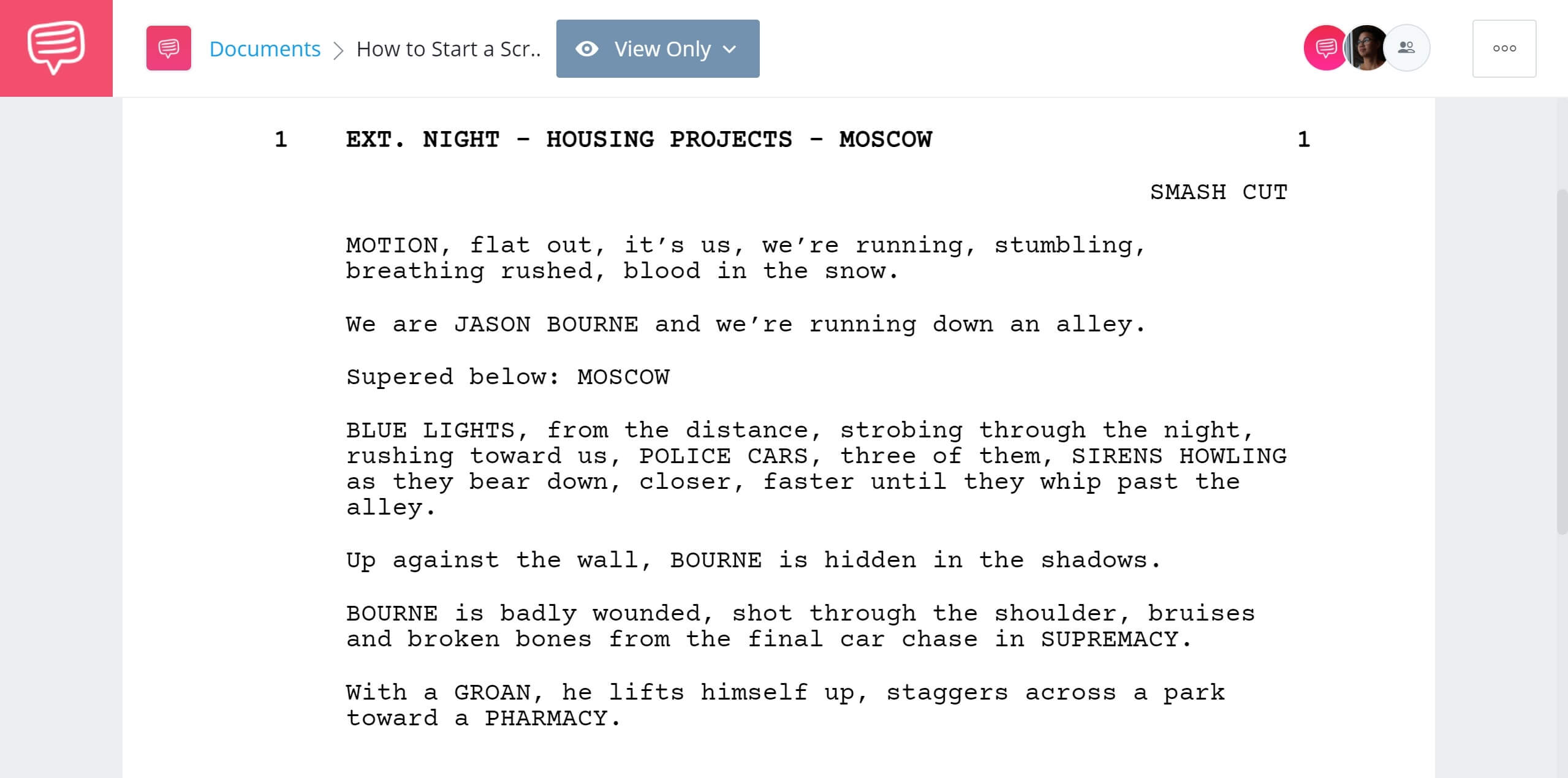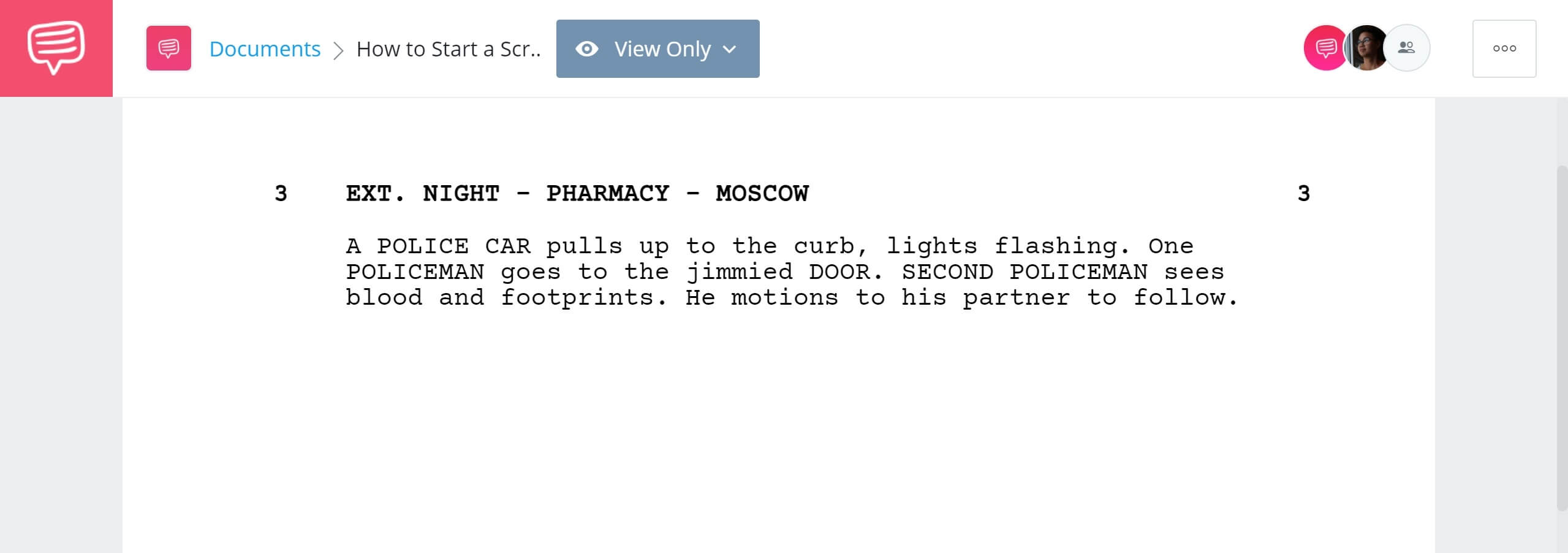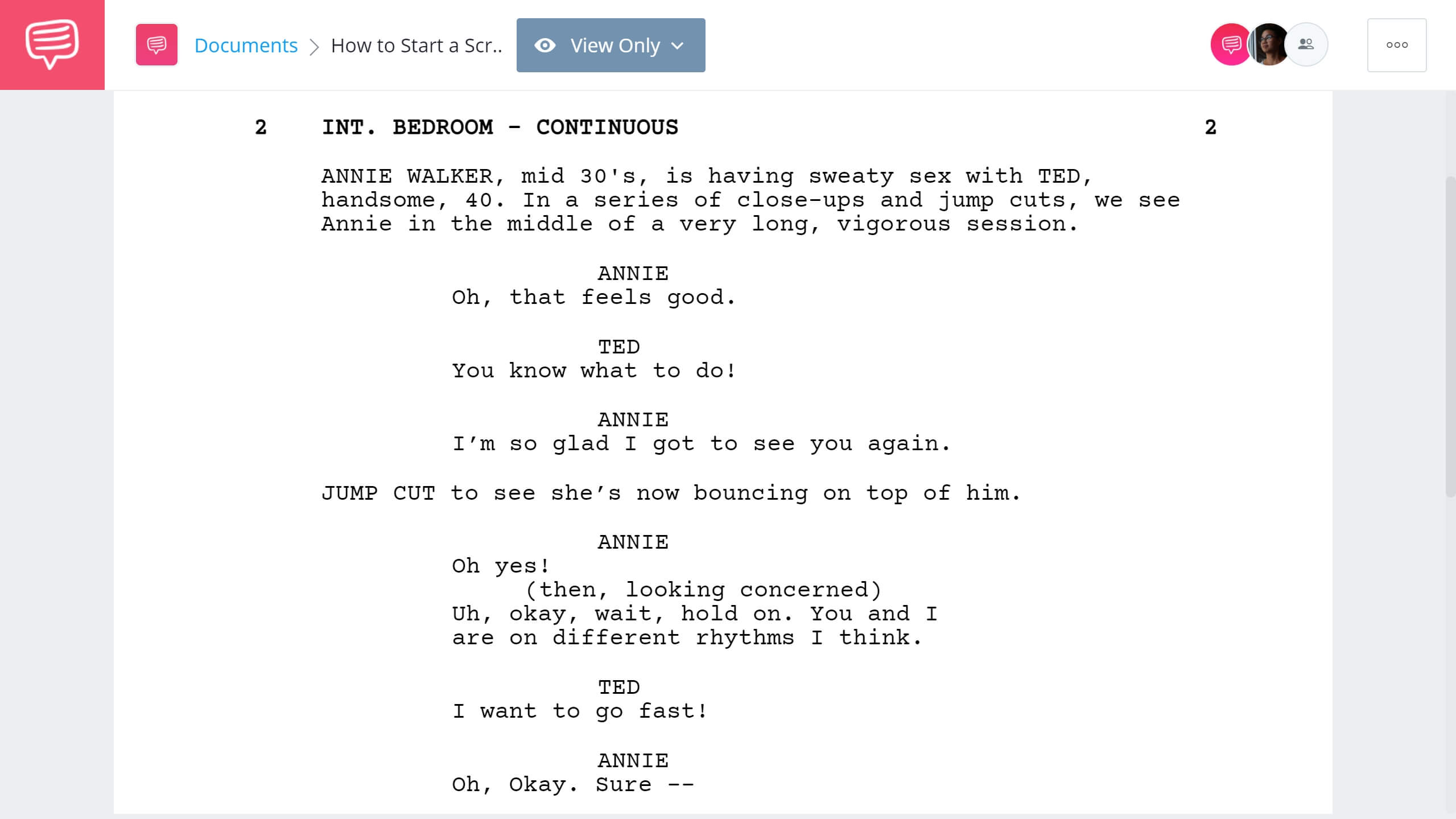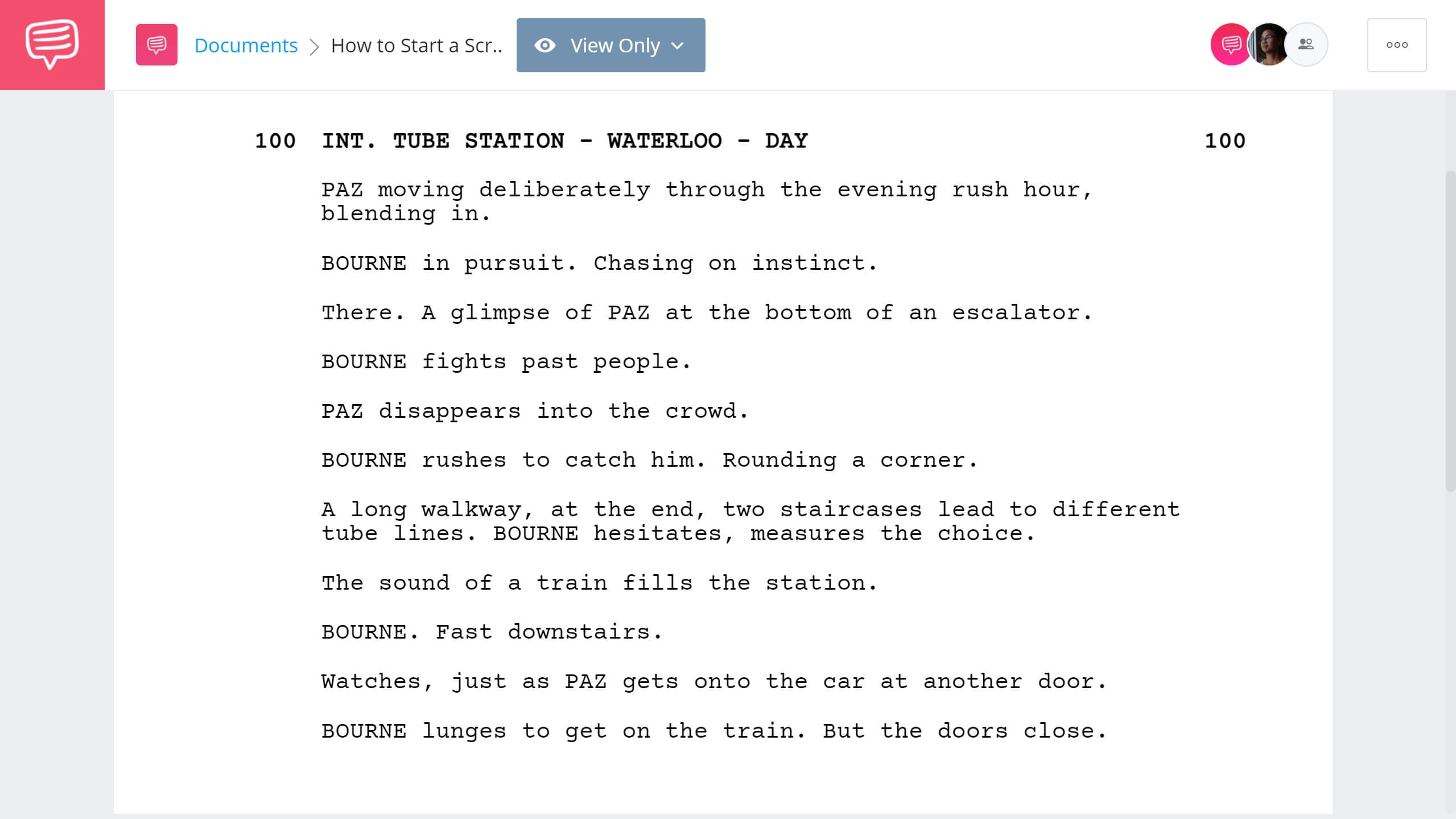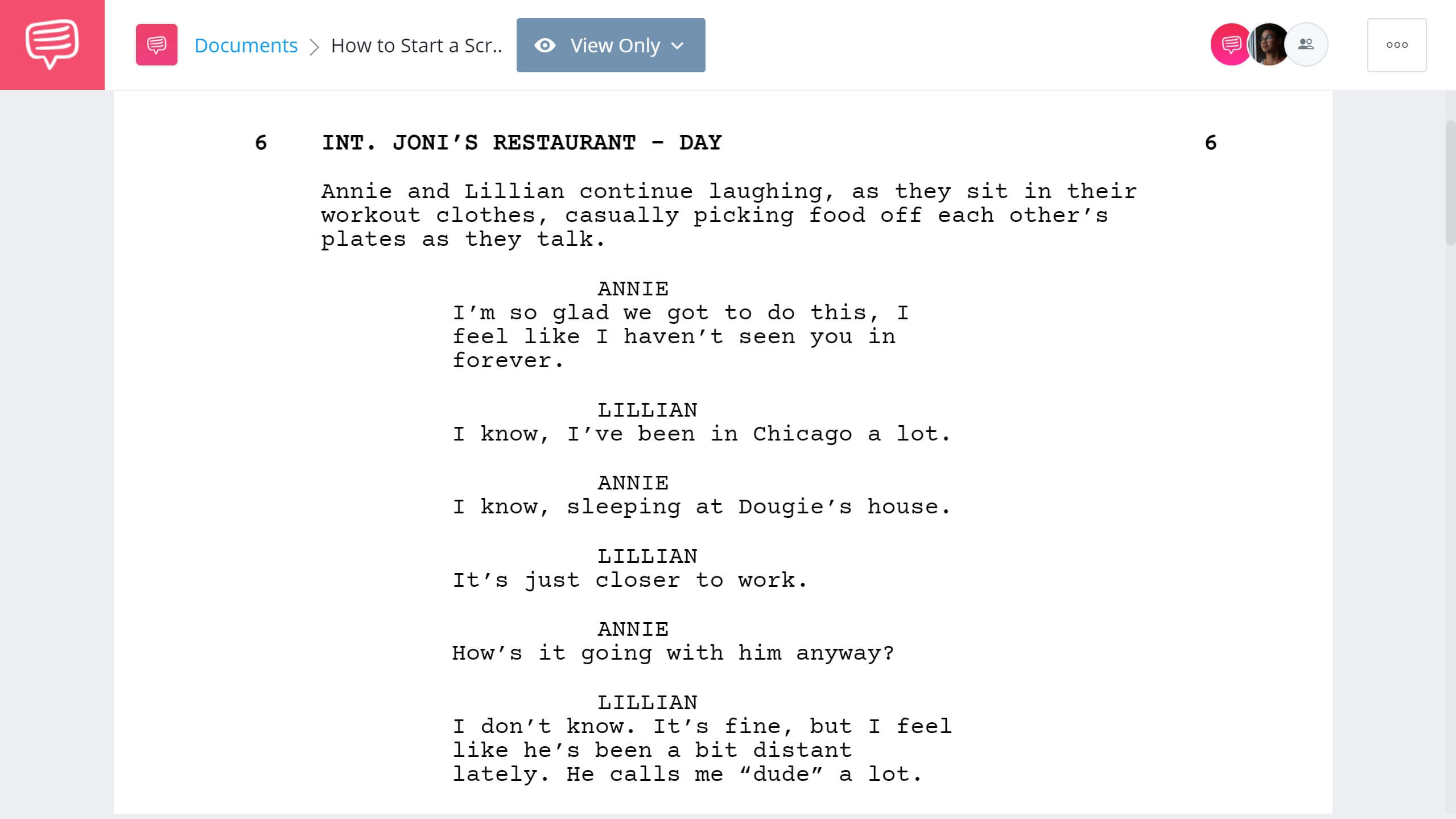I want to write a film script, you say, but I don’t know where to start! What are the steps of writing a movie script? How do I begin the work that might result in a classic of page and screen? Every writer, no matter how great or famous, confronts the blank page. This is particularly true in screenwriting, since a screenplay is mostly blank space. Properly formatted, each page gives you just a handful of lines to unfurl an entire story world. This may seem daunting, but there are plenty of tried and true methods to teach you the best way to write a screenplay. Below we outline strategies and guidelines for how to begin a script — from generating ideas to starting the first draft.
How to prepare a script
Understand that writing is a process
It might seem strange to think of writing, or any art, as resulting from a process, as opposed to unfettered inspiration. But in some ways writing is as much a nuts and bolts endeavor as building a house. Generating ideas and developing them is the result of deliberate planning. In this video Quentin Tarantino discusses some of what goes into his writing process.
Quentin Tarantino on how to start writing a screenplay
There is so much involved in writing a story, so many aspects to consider and story layers to interweave, that only a step-by-step process makes it possible. That process can be broken down into four basic steps:
- Discovery
- Drafting
- Revising
- Copyediting
Discovery is the idea generation stage — the stage where you get ideas and begin to develop them.
Drafting is the initial writing stage — generating rough editions of your story just to get everything down on the page.
Revising is the process of transforming rough drafts into more polished drafts. More than just tinkering, revising involves the heavy lifting of rewriting your material to make it better.
Copyediting and revising are typically done in tandem. But where revising is heavy lifting, editing is detail work — employing the proper screenplay format; checking on grammar, spelling, punctuation, etc. And when you use dedicated software like StudioBinder's screenwriting app, the formatting is done for you.
StudioBinder's Screenwriting Software • Start writing for FREE
But using software and understanding the mechanics of writing is just the beginning. To be a writer who writes instead of a hobbyist who dabbles, you've got to internalize a routine and habits.
Scriptwriting Steps
Build writing habits
Before we get into the details of the process, it’s important to establish that all successful writers develop habits that get them writing on a regular basis. There is no hard and fast rule for what will work, other than to know your own habits and tendencies and then develop writing patterns and schedules based on them.
- Write at the same time each day
- Write at the same place each time
- Before you write, read or watch a film for ideas or inspiration
- Exercise before you write
- Eat a healthy meal before you write
In this video, Jerry Jenkins, the author of 195 books, describes the process that has made him so prolific.
How to start a movie script or novel
Whatever your strategy, you must regularly approach writing with discipline and adequate mental energy.
How to begin a screenplay
Generate ideas
Romanticized depictions of writing often show authors pouring brilliant ideas onto a blank pad or screen. In reality, writers are generating ideas constantly — in bed while trying to sleep, while wheeling a cart around the supermarket, in the shower, or walking the dog.
The writer’s conscious and unconscious mind is formulating, synthesizing, and rejecting ideas before she ever puts pen to paper. In this video, Stephen King discusses how he generates ideas before starting a story.
Stephen King on how to start a script or novel
But while developing and working through story ideas in your mind is key to the writing process, trying to keep every observation and idea in your head is impossible. To this end, many writers keep a journal. You can write down anything in your journal, but some things that might be useful for how to begin a screenplay include:
- Plot, character, and story world ideas
- Vivid dreams you’ve had
- Lists of movies that you admire
- Bits of overheard conversation that might work as dialogue
- Events you’ve read about in the news
Freewriting is another method that can help you generate ideas, as explained this next video.
How to start a script with freewriting
Freewriting is a technique that allows you to take literally the idea of getting something — anything — down on paper. Open up your unconscious mind and see what pours out. You may be surprised by what you are really passionate about or frightened of.
The rigorous and specific format of a screenplay can feel constricting or too formal for the process of simply brainstorming ideas. So start by freewriting and then sift through it for useful material. Freewriting and journaling can help with discovering what is meaningful to you.
Related Posts
How to start writing a script
Choose a story subject
Now that you have an idea of how to start a script writing process, and you’ve engaged in the process of generating ideas, you must narrow down those ideas into a subject. In doing that you should:
- Write what you know but also...
- Write what you don’t know
In other words, bring your specific experience to bear, but don’t allow that experience to limit your imagination, as the narrator in this video explains.
Write what you know...and what you don’t know
But you also don’t want to just “write your life,” a mistake that many beginning writers make. They think because something feels dramatic to them, it will inherently be dramatic to others.
The trick in writing what you know is not just to reproduce your experience on the page, but to find in it what is interesting, unique and original and shape it into a narrative.
The key to writing what you don’t know is to extensively research your subject and, of course, to unleash your imagination.
How to start writing a movie script
Learn the principles of drama
This is the hardest part — and the most time consuming. Beginning writers often feel that because they have a good idea for a story, it will automatically translate onto the page. They may start well, but they quickly stall without a knowledge of dramatic writing.
Covering all the elements of storytelling is beyond the scope of this article on how to start a script. Fortunately, StudioBinder has you covered with dozens of articles and videos on subjects such as character development, act structure, and theme. This video analysis of Christopher Nolan’s Interstellar will help you see how story structure works within a movie.
Steps of Writing a Movie Script • Subscribe on YouTube
StudioBinder also features dozens of script breakdowns and a massive online script library to help you understand story structure, including analyses of Star Wars Episode III: Revenge of the Sith and Uncut Gems.
Best way to write a screenplay
Write within a genre
Not everything in your writing comes from your own life. You should also learn what it means to write within one of the many film genres.
Writing movies often involves writing genre stories such as the thriller, Western or romantic comedy. Most produced TV and movie scripts stick closely to specific genre tropes.
In this video, Jordan Peele discusses writing within the thriller genre.
How to start a screenplay in a genre
However, many writers make the mistake of simply copying elements from other movies they admire. While it is ok to borrow ideas from other movies and to take inspiration from them, ultimately you must add something original to your work to make it interesting.
How to prepare a script
Write a treatment
Once you have a basic grasp of storytelling principles — plot, character, theme, and genre — it’s time to write a first draft. The purpose of a rough draft is to get the basic story and characters down, to create a beginning, middle and end, even though the story will likely change as you write it.
It’s difficult to draft from scratch in screenplay format, which is why screenwriters often write a first draft in treatment form. A treatment is a summary that lays out basic story elements in prose form.
Think of your treatment as an outline or road map that guides you once you begin writing the actual screenplay. This video will guide you through the steps of writing a treatment.
How to begin a script
Once you have a completed treatment, you will write the first screenplay draft. In this first draft, you will transfer the elements from your treatment into proper screenplay format.
Use StudioBinder's free movie treatment template to lay the foundation for your script.
HOW TO START A FILM SCRIPT
Start writing your script
For a more thorough overview, you can reference How to Write a Movie Script: Screenplay Format and Examples. But we’ll cover the basics for how to start writing a script for a movie.
Screenplays are typically written in master scenes, which describe the action and visuals simply, without camera angles, suggestions for edits, or directions for actors. Here is the opening scene of The Bourne Ultimatum.
Where to Write Scripts • Written in StudioBinder
Notice how the action, visuals and sounds are simply and economically described. Let the filmmakers decide how to stage the action, what filters to use on the camera, or what music to play over the scene. And don’t direct the actors. Let them interpret your brilliant lines!
How to start a screenplay
Master basic elements
Screenplays contain four basic elements: scene headings, action/description, character names, and dialogue. A fifth, less used, element is the parenthetical.
Writing scene headings – sometimes known as sluglines – has a specific function, allowing the reader to quickly orient herself to the scene. It also makes essential information easily accessible for production.
Scene headings include INT. or EXT. (interior or exterior), LOCATION, and what time it is, typically DAY or NIGHT.
Sample Screenplay • Written in StudioBinder
Capitalize a character's name in description of action only the first time it appears, not throughout the entire script, as in this example from the Bridesmaids screenplay.
Sample Screenplay • Read it in StudioBinder
You do, of course, want to put names in CAPS over dialogue, but screenwriting software will take care of that for you.
Do not write description of action in CAPS, except for the occasional word you want to stress, such as a or key prop (BATMOBILE) or sound (BANG).
Never capitalize dialogue, even if you feel it should be emphasized. Again, let the actors and director interpret the script.
How to start writing a film script
Be economical!
Description of the action should be clear and to the point. Avoid flowery descriptions that kill the pace and make it difficult for the filmmakers to interpret your visuals.
Description of action is always in present tense and not indented.
Always avoid writing large blocks of description.
You should write action in short, digestible chunks of no more than a few sentences, as in this example from The Bourne Ultimatum.
How to start a Script • Written in StudioBinder
Of course, depending one what kind of scene or movie you are writing, your description might need to be a little more dense and detailed, but the basic rule of screenwriting is that less is more.
You should be similarly economical with dialogue. Avoid writing long speeches. The best dialogue has a brisk pace and a smooth flow, as in this Bridesmaids example.
Best Way to Write a Screenplay • Written in StudioBinder
Related Posts
UP NEXT
Best Opening Scenes
Now that you know how to start a script, and where to write scripts (in StudioBinder, of course!) let’s take it to the next level and look at what makes a great beginning. Study these 25 opening scenes from acclaimed films to familiarize yourself with classic examples of how to begin writing a screenplay.

